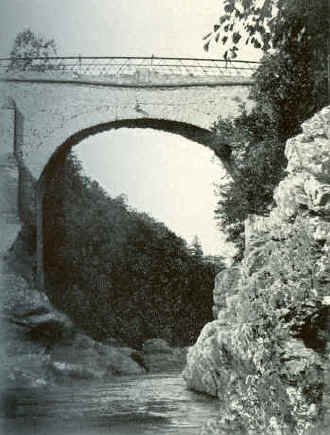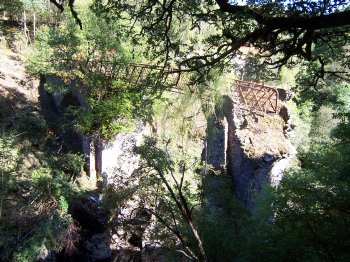High Bridge will be certainly be featured in the Prestonpans Tapestry
The first engagement of the '45 will have a proud place on the Tapestry
As soon as Sir John Cope learnt of the Prince's landing, he ordered 90 men from two companies of the 1st Royal Regiment of Foot to march from Perth to reinforce the garrison at Fort William. They made good progress to Fort Augustus and on August 16th [three days before Glenfinnan] embarked on the final 25 miles to Fort William through the wild and barbarous country.
Knowing of their march, Alexander MacDonnell of Keppoch sent his cousin, Donald MacDonnell of Tirnadris, with just eleven men and a piper, to the inn at the south end of the High Bridge across the River Spean, whilst Keppoch gathered sufficient clan members to oppose the redcoats.

However, before Keppoch could arrive the redcoats reached the High Bridge and Tirnadris commanded his piper to play and his eleven men proceeded to trick their commanders into believing they faced a much larger force. After a brief skirmish the redcoats withdrew harrased by Tirnadris until Keppoch arrived with reinforcements. Eventually the MacDonnells were joined by a party of Glengarry's men and the redcoats finally surrendered to Keppoch. Redcoat Captain John Scott was wounded and paroled to Fort William.
High Bridge was allowed to collapse in the 20th century as pictured below in 2009

___________________________________________________________
Footnote: Donald MacDonnell of Tirnadris was captured at the Battle of Falkirk early in 1746 and was executed at Carlisle on October 18th that year, with his head exhibited on Scotch Gate. The High Bridge remained the main crossing of the Spean from 1736 until Thomas Telford built anew in 1819 at what became known as Spean Bridge downstream.
Published Date: September 24th 2009
|





